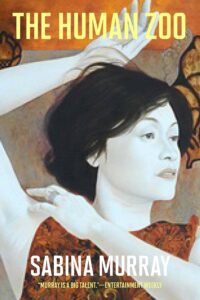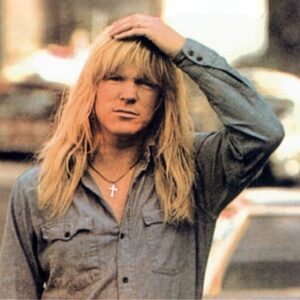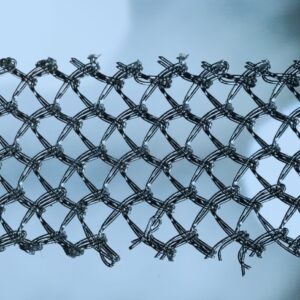
Sabina Murray on the Limits of Journalism and the Wondrous Possibilities of Fiction
Jane Ciabattari Talks to the Author of Human Zoo
Before I began a conversation with PEN/Faulkner award winning author Sabina Murray about her seventh book—a sometimes blistering, sometimes sardonic, always enlightening and suspenseful contemporary tale centered on a Filipino-American journalist who returns to Manila during a marital split, I checked in on how she was doing during this past tumultuous year. “I did okay.” She explained: “First, my sons, were home all the time and even though they were going nuts, it was nice to see them. Also, my partner, Adrian Hill, runs the Jenner Institute at Oxford that developed the AstroZeneca vaccine, so I was very well informed on how we might turn this thing around. I was mostly based in Amherst, Massachusetts, but I did travel back and forth to England, and that was weird.”
“I remember being at Logan Airport in an empty terminal and watching a mouse casually circuiting the lounge chairs. It was that deserted. Despite all the available time, it was strangely difficult to write, and even read, but I did have the time to edit The Human Zoo, which went through multiple revisions. And then in the spring, I taught two classes on Zoom and the students were so hungry to use their minds, to stop thinking about Covid for a few hours, that the discussions felt vital and important. When we first shut down, I did what many people did. I developed a friend pod. I spent time with my kids. I baked bread. I watched Tiger King.”
*
Jane Ciabattari: Let’s talk about your title. Ting, your narrator, is an award-winning writer, researching and writing a book involving “human zoos”—Bontoc tribal members from Northern Luzon, including their chief, Timicheg, who were lured from their homeland with a promise of money by Richard Schneidewind, an American entrepreneur, and put on display as an attraction at Coney Island. How did you settle on that title? And this element of the novel?
Sabina Murray: My book is not the first to be called The Human Zoo. That other book is by the anthropologist (and surrealist) Desmond Morris and was sitting on my father’s shelf (also an anthropologist, not a surrealist) when I was growing up. Morris’s book looks at the effects of living in cities on the human species, how we respond to this unnatural state as animals in zoos—with anxiety, aggression, and despair. This, coupled with the historical reality of the human zoos of the early 1900s, made the title work for me on several levels. Also, I first understood the scope of what I wanted to write at a gallery standing in front of Filipino artist Ronald Ventura’s massive painting Party Animals, which is a disorienting masterpiece featuring anthropomorphic wolves and deer and bears. For me, the title resonated in many ways.
But ultimately, the first instinct to The Human Zoo came from Timicheg’s story, which I felt needed to be told. I felt that the United States’ relationship with the Philippines deserved to be better understood. The United States and the Philippines fought a bloody war as the Philippines struggled for independence. Before Vietnam, there was The Philippines. I’m amazed at how many people just don’t know this. Of course, these conflicts are not completely analogous, but they do bear many similarities.
JC: At the 1899 Battle of Caloocan, Ting notes at one point, the Bontoc were “tricked” into joining the fight by the Tagalog-speaking insurrectos. One of the Bontoc guided the Americans along a secret path to the Tirad Pass, where they were able to surround the insurrectos and prevail. Schneidewind shows up six years later. This is also the point at which Ting’s great grandfather, Benjamin Klein, chose to stay in the country and marry a Filipino woman: “after shooting these people, he was now going to marry one. And make me a person who had stakes on both sides of the battle.” Does Ting’s own complicated ancestry fuel her interest in Timicheg and the Bontoc?
I felt that the United States’ relationship with the Philippines deserved to be better understood. The United States and the Philippines fought a bloody war as the Philippines struggled for independence.
SM: Ting’s ancestry makes her interested in Timicheg as a subject, but also makes it impossible for her to truly access his experience. Her difficulties in writing about the Bontoc chief’s life come from more than writer’s block, more than malaise. The book questions Ting’s motivation—and even right—to write about Timicheg at all. In order to explore this, ironically, I had to use the experience of Timicheg to get my book in motion. Yes, we want to examine historical wrongs to better understand humanity’s capacity to commit such crimes. But when is that an act of justice seeking? When is that an act of further exploitation? But both these realities make a subject like Timicheg attractive to a writer, and the moral ambiguities in the realities themselves are also intriguing to explore.
JC: The Human Zoo is set in the Philippines, where you grew up. Ting’s journey begins when she is on the verge of divorce, and leaves her husband, a banker, in New York to fly to Manila and find refuge in with her 90-year-old Tita Rosa in her ancestral house, which is “sliding into indolent decay.” Ting reconnects with her extended family, her college friend Inchoy, who is gay and a socialist, her former boyfriend Chet, a businessman who wants to lure her back with a luxurious tower apartment. Her travels, from a visit to a fortune teller in the impoverished, “traffic-glutted” Tondo section of Manila, to her cousin Jim’s ambitious estate in Batangas, reveal multiple layers of contemporary Filipino society. Did you do this by intention? Or was it organic?
SM: I would say both. It is impossible to give a nuanced portrait of contemporary Manila society without examining the multiple layers. It is also impossible to drive around Manila without seeing the extremes in the different ways people live their lives. What was intentional was the desire to show how complex the Philippines is, to not let my novel devolve into a representation of a country easily understood—poor, backward, and resigned to its fate.
In a way, I was writing against misconceptions I’ve encountered among Americans when it comes to the Philippines. Yes, many Filipino/as are overseas workers. Yes, Filipino/a nurses are most often exceptional caretakers. But there is a lot more to the nation and its people than that. I wanted readers to learn about the Philippines—society, history, relationship with the US—and to leave the experience of reading respectfully aware of what they didn’t know.
But also I wanted to write a novel that looks at the enormous financial disparity between the wealthy and the poor, as much an issue in the United States as it is in Philippines, because this morally bankrupt reality is detrimental to everyone, affecting climate-change, pandemics, incarceration, migration, wars, et cetera. Fewer poor people is good for everyone, the rich included. But just from the fiction perspective, having people from different sectors of society—different realities—confront each other makes for interesting interactions. Ultimately, I have many political statements to make, but in the end, they only get to stay if they don’t bog down the characters.
JC: As a journalist, Ting, offers a realistic take on the fictional president, Procopio, “Copo” Gumboc, “who had swept the election in an upset and was now governing the nation in state-run terror. Under his rule police had carte blanche to executive anyone suspected of dealing or using drugs…” Gumboc clearly is drawn from Philippine President Rodrigo Duterte, who was elected by a landslide in May 2016. In May 2017, you published a piece in Vice about Duterte’s popularity (80 percent at the time), his murderous regime (“Duterte has been accused of mass murder before the International Criminal Court, and from the time he took office at the end of June, his war on drugs has resulted in the slaughter of somewhere near 8,000 people”) his ties to established political order, his influence on what has come to be known as “extrajudicial killings,” so ubiquitous that they spawned the acronym EJK. How did you work the “facts” you gathered as a journalist yourself into this novel about a writer who reported for Vice about the fictional Gumboc? Do you think it’s easier to tell truth through fiction?
SM:The goals of fiction’s truth-telling are different than journalism. My experience as a journalist is limited. As I worked with my editor on the Vice piece, each fact had to be verified through another source. Within this model, it is very difficult to make a personal statement—and that’s probably a good thing. But I did come away from the experience thinking there was a novel in this material, a novel which would address the facts of the article, but in a way that might beguile with entertaining plots and intriguing characters as it presented its narrative. And the goal of this novel would be to humanize these news bites. Stalin’s famous quote, “One person is a tragedy, a million is a statistic” guided me (thanks, Stalin) as I tried to put a face to tragedy of the EJK victims. In addition, journalistic work needs a consistency of tone. In the novel, one can write with humor, with ardor, with fear, with horror. Humor becomes very important in making the darker moments resonate, and humor is essential to understanding Filipino culture. The novel accepts this.
It is impossible to give a nuanced portrait of contemporary Manila society without examining the multiple layers.
In a journalistic piece about a country struggling under a dictatorship, one cannot make the jokes that are essential in understanding Filipino resilience. But beyond humor—which helps to express the quotidian bizarreness of living under a dictator—the novel tells through the experiences of individuals, and this transactional sympathy (also the length of time that a novel demands the attention of the reader) can drive home the human stakes of political realities.
JC: In the course of the novel, you address the role of the journalist with nuance. Ting is a reporter with a sophisticated perspective; she was raised in Manila and then was based in the US. Early on, she is saddled with Laird, a Filipino-American journalist who is marrying her cousin uses Ting to make connections, and who she finds annoying because he poses “question after question in the same uninflected, American English.” (Laird inserts himself into so many of Ting’s experiences that he becomes suspect, for good reason.) Ting’s journalist friends include Jose Martin, who was incarcerated during martial law, had “suffered greatly during his imprisonment, and but was undeterred from the pursuit of truth….” Gumboc, in sometimes clownish moments, baits journalists in ways one could consider “fake news.” Where does the journalist fit into the scheme of things in the contemporary Philippines?
SM: Suppression of free speech is one of the first signs that a democracy is in danger, as is an administration’s wielding of “fake news” to control a population. This we know, both in the context of the Philippines, and first hand as Americans. The conviction of Maria Ressa, founder of the Philippine news outlet Rappler, for cyber libel, illustrates just how dangerous balanced reporting on the Duterte administration can be. The persecution of journalists in the Philippines recalls the dark period of martial law in the time of President Marcos. Journalists are the canaries in the coal mine. Their treatment is a good indicator of the health or disease of a democracy.
Journalists, both as frontline workers in a brutal regime, and as indicators of the health of the nation, are recognized as having tremendous importance. Some of this cultural acknowledgement of the power of the pen comes from Philippine hero José Rizal, who was shot by firing squad in 1899 for writing rebellious novels that made Spain look bad. He might have been the first such martyr, but he certainly wasn’t the last. People writing truths uncomfortable to those in power don’t always do so well in the Philippines.
Humor becomes very important in making the darker moments resonate, and humor is essential to understanding Filipino culture.
But there’s also the fictional shorthand in the role of journalist—one who seeks the truth in order to disseminate it to the broader population. If you have three characters in a novel all looking for the truth and coming up with different results, it makes for rich fictional fodder. And when there is possibility of persecution, a reality that journalists working in the Philippines live with, it raises the stakes.
JC: You’ve written historical fiction (most recently Valiant Gentlemen, centered on 19th-century Irish activist Roger Casement). In The Human Zoo, you weave in strands of history necessary to understand the complex present of the country. What are the most difficult elements of Filipino history for you to convey to a readership who might be unfamiliar with its past?
SM: Conveying information is made easier when there is little to displace, so the fact that not that many readers in the US are familiar with Philippine history and the role of the United States in it simplifies things somewhat. What is difficult in conveying history is controlling it in the narrative—you don’t want to have the appearance of history lessons jumping into the novel to disrupt the flow of events or draw away from the actions of characters. Philippine history tangles with colonialism, occupation, and war. I think what is hardest to convey is that the narratives left by such occupations are not as straightforward as one might think. I know that when the Spaniards showed up, they subjugated the Filipinos, and that is, to put it mildly, wrong.
But I also know that I cannot envisage a Philippines where this didn’t happen. Filipinos fought a bloody war with the United States as they struggled for an independence that was their natural right. The Japanese occupation of the Philippines had a huge death toll with a level of violence hard to comprehend. All these hardships have shaped the country that I know. It is not a peaceful history, but it is interesting. What is difficult to convey is that one looks at all these painful historical episodes with the realization that you’ve been created out of them. It’s not as simple as saying “colonialism is bad.” It’s more, “Yes, colonialism is bad, and who would I be without it?” Conveying this complication—all the gray areas and moral pitfalls in the structuring of an identity—that is difficult.
JC: You use the stories Ting’s relatives tell to weave in some aspects of history. I was particularly struck by Tita Dom’s description of the ways in which the 1945 massacre at Fort Santiago, in which the departing Japanese Army killed some 100,000 Filipino civilians, affected her family (her mother nearly starved; her father and thirteen-year-old brother were killed, their bones never recovered). After Tita Dom responds graciously to Laird’s pointed questions, he becomes even more direct with Ting, who explains that they were among the Filipino men imprisoned in a dungeon at Fort Santiago, drowned by the rising water. That personal perspective is so much more revealing than the “facts.”
SM: History in families is a personal thing. Much of the inspiration for my writing that looks at the Philippines draws from stories I’ve heard all my life, stories that drive home how the bigger machine of history explains, for example, why I never knew my maternal grandfather. What’s curious is how these events that shaped your elders also shape you. In a way, by living with my mother, I lived through World War II, because she was so defined by it—by trauma and survival. Histories are inherited, and history is personal. So the more complex machinations of Philippine history are best understood in simply seeing how they have affected characters. You don’t have to know everything, or even very much. You just have to know that the character was shaped by it, that their world view will always be skewed in a particular way.
What is difficult in conveying history is controlling it in the narrative—you don’t want to have the appearance of history lessons jumping into the novel to disrupt the flow of events or draw away from the actions of characters.
JC: You’ve described the “doubling” that you feel, “as a mixed-race Filipino/American, whose cultural makeup is heavily indebted to my Filipino roots. It is as if we can exist in two rooms simultaneously. And living in a state that is constantly weird does immure one to being shocked by other weirdness, or the absurd.” Ting experiences this “doubling.” How difficult is it to convey this experience in fiction?
SM: In a way, fiction is the perfect place to make this happen because readers are already doubling their experiences by taking on the consciousness of a character as they read. And writers are always being themselves and their characters simultaneously. When writing a novel, you’re essentially acting out all the parts in a play of your design, with any time signature you choose. Perhaps the difficulty that might arise with Ting’s doubling would be if the reader wanted her to be one thing. She is American. She is Filipina. And, as one early reader pointed out, despite her apparent distancing of self from FilAms, she is also FilAm. And although being mixed-race is its own thing, I know that immigrants and their children who live as Americans also experience a variety of this doubling. So perhaps it is becoming a more universal mode for experiencing things.
JC: Which authors inspired you in the course of writing The Human Zoo?
SM:The Human Zoo tangles with two books in a very intentional way: The Quiet American by Graham Greene and Heart of Darkness by Joseph Conrad. Both of these are racist texts, and I doubt that either writer would have much of a problem with that assessment. I imagine Conrad saying that he wasn’t trying to write a balanced narrative, and Greene saying that he finds racists interesting. Of the two, I spent more time thinking about The Quiet American. In that novel, Fowler has a Vietnamese mistress named Phuong. She is a cipher: beautiful, docile, and near silent most of the time. But early in the book Fowler describes his rage at her emotional reserve. This he tries to pass off as a shortcoming on her part, a Vietnamese characteristic, but (maybe because of my constant doubling) I read it differently. I see it as she’s willing to give Fowler a lot—her body, domestic duties including stuffing his opium pipe—but she draws the line at her feelings. What if we saw her emotional life—resignation or rage—on the page? How would that change the narrative?
Another character in the novel is Pyle, an American, who has strong feelings about “improving” the lot of Vietnam. What if that man were Vietnamese? How would that play out? Of course, The Human Zoo doesn’t work as a rewriting of The Quiet American, but many characters do have hallmarks of my questioning of that book. And perhaps there is little of Heart of Darkness in my book, other than a plot point that plays with Marlow’s infamous stating, “your name.”
In a way, fiction is the perfect place to make this happen because readers are already doubling their experiences by taking on the consciousness of a character as they read.
But the brilliant pushback against Heart of Darkness in essays by Chinua Achebe and Caryl Phillips informs my approach to the material. What happens when the conquered, subjugated land is not filled with natives as window-dressing, but with actors? What happens when characters who could be conveniently flat refuse to cooperate? Those are two of the books that I considered pointedly, but I remain inspired by the work of so many contemporary writers, Gina Apostol, Viet Than Nguyen, Alexander Chee, R. Zamora Linmark, Maaza Mengiste, and many others. I had the good fortune to be developing a course on immigrant fiction this past year and had the opportunity to read new works by Patricia Engel, Jakob Guanzon, Lyslie Tenorio, C. Pam Zhang, Yaa Gyasi—the list goes on—but contemporary fiction is being shaped by these transnational voices and that guided my editing process, helped me to see what needed to be said. Even the critical work done by Paisley Rekdal in her brilliant book Appropriate influenced my shaping of the book.
JC: What are you working on now?
SM: I am headed to Oxford in the spring as a Research Fellow at Magdalen College to start digging around in lives of T.E. Lawrence and Gertrude Bell. I’m very early in my research, and I’m not sure what shape the book will take, but I am interested in how these two characters’ knowledge of the peoples of Greater Syria contributed to the Sykes Picoult agreement that allowed France and England to carve up the Middle East, something both figures were vehemently opposed to. I’m also finishing my edits on a book of literary ghost stories. I like ghost stories, but not that many people who’ve written good ones believe in ghosts. It’s always the horror of the male ego in the end, or the horror sexual repression, or the horror of something other than a reanimated dead person walking around.
Scary stories may seem an odd choice for me, but it’s where I started: I used to enjoy petrifying my little nieces and nephews back in Manila, and when I’m home, their children trail me around begging for me to make up another. After all the heavy research and moral questioning of Valiant Gentlemen and The Human Zoo, I wanted a fun project that really focused on entertaining and storytelling and this book, Vanishing Point, fit the bill. Early readers say the book is terrifying.
__________________________________

The Human Zoo by Sabina Murray is available now from Grove Press.
Jane Ciabattari
Jane Ciabattari, author of the short story collection Stealing the Fire, is a former National Book Critics Circle president (and current NBCC vice president/events), and a member of the Writers Grotto. Her reviews, interviews and cultural criticism have appeared in NPR, BBC Culture, the New York Times Book Review, the Guardian, Bookforum, Paris Review, the Washington Post, Boston Globe, and the Los Angeles Times, among other publications.












